The Fascinating History of Quilting Through the Ages
Quilting is more than just a craft; it's a rich tapestry of history that has evolved over centuries, weaving together stories of culture, necessity, and artistry. From its humble beginnings as a practical solution for warmth to its current status as a celebrated form of artistic expression, quilting tells the tale of human creativity and community. This article takes you on a journey through time, exploring how quilting has transformed and adapted, reflecting the values and needs of societies across the globe.
Quilting dates back to ancient civilizations, where it served practical purposes. The earliest examples of quilting can be traced to places like Egypt, where quilted garments were discovered in tombs, showcasing the technique's durability and functionality. In these early days, quilts were primarily made from layers of fabric sewn together to provide warmth and protection against the elements. As we delve deeper into various cultures, we see that quilting wasn't just a necessity; it was also a form of artistic expression. For instance, in China, quilts were often adorned with intricate designs that reflected cultural beliefs and traditions, while in the Middle East, quilting techniques were used to create stunning tapestries that told stories of the land and its people.
During the Middle Ages, quilting became more widespread in Europe. It evolved from a simple means of keeping warm to a symbol of status and sophistication. Nobles and wealthy families often commissioned elaborate quilts to showcase their wealth and taste. These quilts served not only as bedding but also as decorative pieces that adorned the walls of grand castles. Moreover, quilting played a significant role in the development of armor, where layers of fabric were stitched together to create protective gear for knights. This dual purpose of quilting—both functional and decorative—highlights its importance in medieval society.
The techniques used in medieval quilting were diverse and innovative. Artisans employed various methods, such as layering different fabrics and utilizing unique stitching styles, which defined the art form of the time. One popular technique was trapunto, where the quilter would create a raised design by stuffing certain areas with additional padding. This not only added depth and texture to the quilts but also showcased the quilter's skill and creativity. Other techniques included appliqué, where pieces of fabric were sewn onto a larger background, creating intricate patterns and designs that told stories of their own.
The choice of materials greatly influenced the quality and durability of quilts. In medieval times, quilters primarily used wool, linen, and silk, depending on their resources and the quilt's intended purpose. Wool was favored for its warmth and durability, making it ideal for bedding, while silk was often reserved for decorative quilts due to its luxurious feel. The availability of materials varied by region, which meant that quilts were often a reflection of the local resources and economy. For instance, in regions where cotton was abundant, it became a popular choice for quilts, leading to a new wave of quilting styles and techniques.
Quilting was often a communal effort, bringing people together in a shared activity that fostered creativity and collaboration. Quilting bees became popular social gatherings where women would come together to sew, share stories, and support one another. These gatherings were not just about quilting; they were a vital part of community life, providing a space for women to express themselves and bond over shared experiences. The quilts produced during these bees often held sentimental value, as they represented the collective effort and creativity of the group.
The 18th and 19th centuries saw quilting evolve into a popular art form. This period marked the emergence of distinctive quilting patterns, many of which are still celebrated today. The introduction of fabric printing techniques allowed for a wider variety of fabrics, leading to more intricate designs and patterns. Quilting became a way for women to showcase their skills and creativity, often resulting in beautiful pieces that served as both functional items and works of art. Quilts from this era often featured complex patterns, such as Log Cabin and Double Wedding Ring, which are still beloved by quilters today.
Quilts played a vital role in American culture, particularly during significant historical events. They were more than just decorative pieces; they served as tools for communication, comfort, and expression. During the American Civil War, quilts were often used to provide warmth and comfort to soldiers, while also serving as a means of fundraising for the war effort. Quilting became a way for women to contribute to the war, creating quilts that were sent to soldiers on the front lines, offering them not just physical warmth but also a sense of home and connection.
Some quilts served as coded messages for escaping slaves. The connection between quilting and the Underground Railroad is both intriguing and poignant. Certain quilt patterns were believed to convey messages about safe houses, directions, and warnings. For example, the Bear Paw pattern indicated a safe route, while the Log Cabin pattern symbolized a safe haven. This hidden language of quilts illustrates the profound impact of quilting on social movements and the fight for freedom.
Today, quilting continues to evolve with new techniques and styles. Contemporary quilting movements have emerged, embracing modern aesthetics and innovative designs that challenge traditional norms. Quilters today experiment with a variety of materials, including unconventional fabrics and mixed media, pushing the boundaries of what quilting can be. The resurgence of quilting as a popular hobby has also led to a vibrant community of quilters who share their work online, inspiring others to explore this timeless craft.
- What is the history of quilting? Quilting has a rich history that dates back to ancient civilizations, serving both practical and artistic purposes.
- How did quilts play a role in American history? Quilts were used for comfort, communication, and fundraising during significant events like the Civil War and were even part of the Underground Railroad.
- What are some popular quilting techniques today? Modern quilters often use techniques such as improv piecing, foundation paper piecing, and machine quilting to create unique designs.
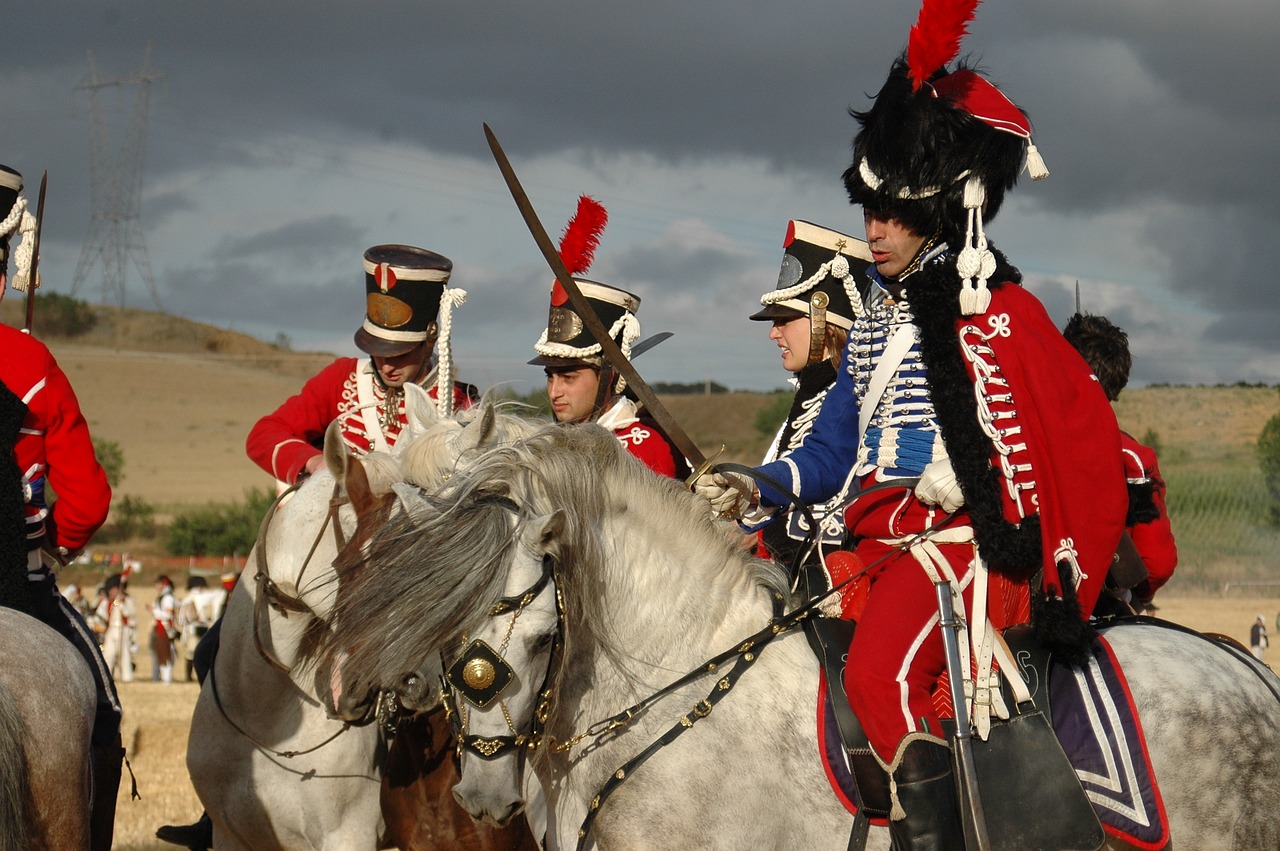
The Origins of Quilting
Quilting, a beautiful blend of art and practicality, has roots that stretch back to ancient civilizations. Its origins are as diverse as the cultures that embraced it. From the **Egyptians** who used layered fabrics to create warmth in their tombs to the **Chinese**, who crafted intricate quilts as a means of preserving their heritage, quilting has always been more than just stitching fabric together. It was a way to tell stories, express creativity, and provide comfort.
In ancient times, quilts served a **practical purpose**. They were designed to keep people warm, especially in regions with harsh climates. The earliest examples of quilting can be traced back to around 3400 B.C. in Egypt, where archaeological finds include quilted garments and bed coverings. These early quilts were made from layers of fabric, often filled with animal fur or plant fibers, showcasing the resourcefulness of ancient peoples.
As we move through history, we see that quilting was not limited to any one culture but was a global phenomenon. In **India**, intricate quilting techniques emerged, known as *kantha*, where old saris were layered and stitched together, creating beautiful patterns. This practice not only recycled fabric but also told tales of the women's lives who crafted them. Similarly, in **Europe**, the Middle Ages saw the introduction of quilting as a means to create padded garments, including armor for knights. This was not just a functional approach but also a reflection of the society’s evolving needs.
The cultural significance of quilting cannot be overstated. It served as a medium of **expression** and a way to document history. Quilts often featured symbols and patterns that held specific meanings, acting as a canvas for the quilters’ experiences and emotions. For instance, certain motifs might represent **fertility**, **protection**, or **community**. The act of quilting became a way for women, in particular, to bond, share stories, and pass down traditions through generations. It was a **social activity**, often conducted in groups, where women gathered to sew, chat, and support one another.
In summary, the origins of quilting are rich and varied, reflecting the **practical needs** and **cultural expressions** of the societies that embraced it. From its humble beginnings in ancient civilizations to its role in communal bonding among women, quilting has always been a fascinating intersection of necessity and artistry. As we continue to explore the history of quilting, we will see how it evolved through different eras, adapting to changing times while retaining its core significance.

Quilting in the Middle Ages
During the Middle Ages, quilting emerged as a significant craft across Europe, evolving from a practical necessity into a more widespread art form. Initially, quilting served essential functions, such as providing warmth and protection. For instance, many people used quilts as bedding, which was crucial during the colder months. But did you know that quilting also played a role in warfare? Yes, medieval soldiers often wore quilted armor, known as gambesons, which offered both protection and flexibility in battle. This dual purpose of quilting showcases its versatility and importance in medieval life.
As society progressed, the art of quilting began to reflect social status and wealth. Nobility often commissioned elaborate quilts, showcasing intricate designs and high-quality materials, while peasants created simpler, more functional quilts. The disparity in quilting styles and techniques between classes highlighted the societal divides of the time. Moreover, quilting became a way for women to express their creativity and skill, often competing to create the most beautiful and intricate designs.
The techniques used in medieval quilting were diverse and innovative. One popular method involved layering various fabrics to create a thicker, more durable quilt. Quilters would often use a combination of linen or wool for the top layer, with cotton or wool batting in between, and a sturdy backing fabric. This layering not only provided warmth but also allowed for creative expression through the choice of colors and patterns. The stitching styles varied widely, with some opting for simple running stitches while others employed more complex techniques like trapunto, where the design was stuffed to create a raised effect.
The choice of materials greatly influenced the quality and durability of quilts. Fabrics such as wool, linen, and silk were commonly used, depending on availability and the quilt's intended purpose. Wool was favored for its warmth and durability, while silk was often reserved for the upper class due to its luxurious nature. The fillings, too, varied; some quilts contained straw or feathers, while others utilized wool batting, which offered both insulation and comfort. The resources available dictated not only the quality of the quilts but also the creativity of the artisans who crafted them.
Quilting was often a communal effort, bringing people together in a shared activity that fostered community bonds. Quilting bees became popular gatherings where women would come together to work on quilts, share stories, and build friendships. These events were not just about sewing; they were a vital social outlet that allowed women to express their creativity and collaborate on projects. The atmosphere was often lively, filled with laughter and conversation, making quilting a cherished tradition in many communities.
In conclusion, quilting during the Middle Ages was not merely a craft; it was a reflection of the era's social dynamics, technological advancements, and cultural practices. From its practical origins to its role as a form of artistic expression and community bonding, quilting has a rich history that continues to evolve.
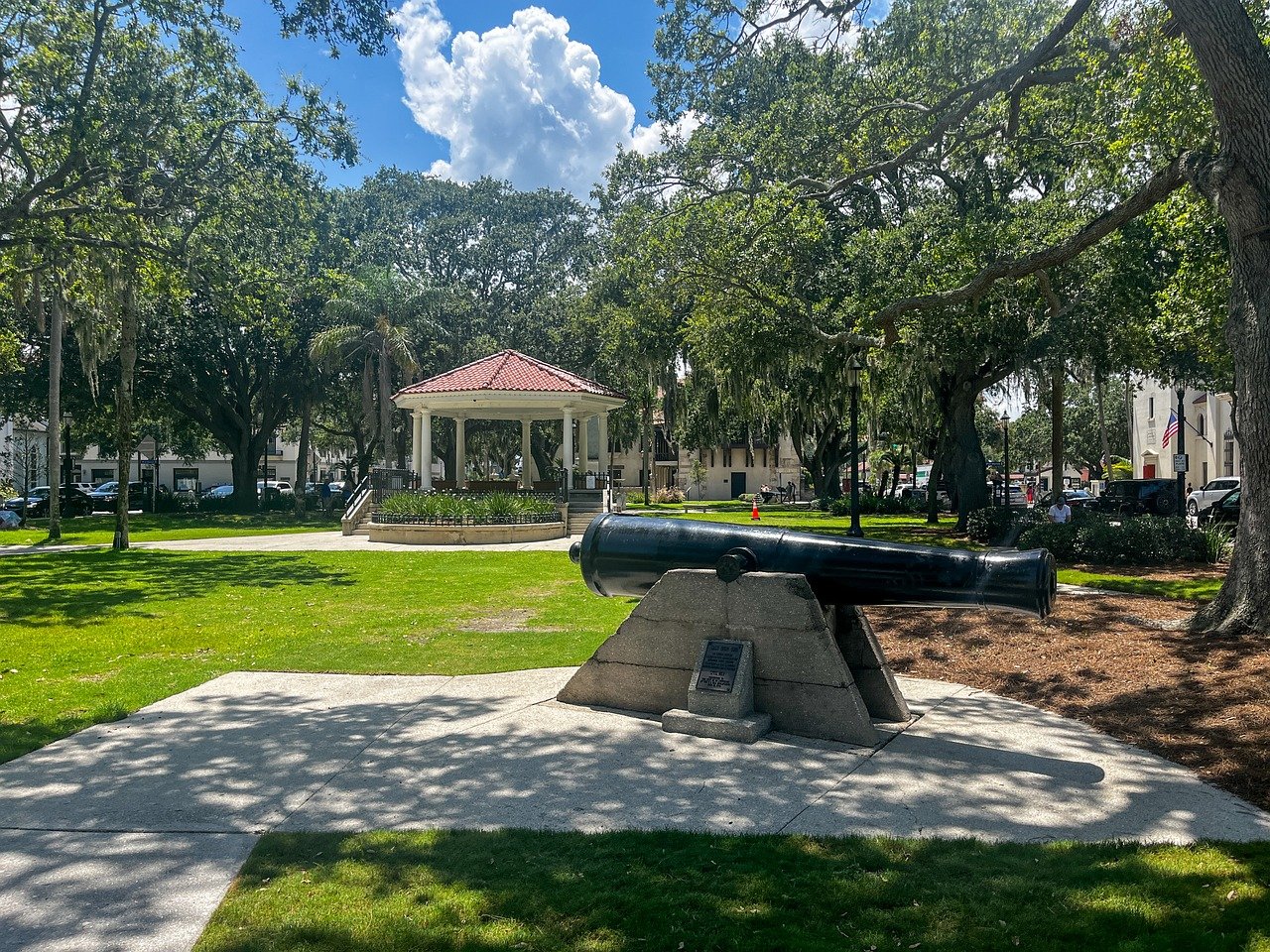
Techniques of Medieval Quilting
During the Middle Ages, quilting advanced significantly, showcasing a variety of techniques that not only enhanced the aesthetic appeal of quilts but also improved their functionality. One of the most notable methods was the practice of layering, where multiple fabric pieces were stitched together to create a thicker, more insulated product. This technique was particularly useful for making warm bedding and protective clothing. Imagine layering a cake—each layer adds not just to the height but also to the richness of flavor. Similarly, each layer in quilting contributed to the quilt's warmth and durability.
Another prominent technique was the use of stitching styles. Medieval quilters employed a range of stitching methods, from simple running stitches to more intricate designs like the backstitch and whip stitch. These stitches not only secured the layers together but also added decorative elements to the quilts. The combination of utility and artistry was a hallmark of medieval quilting, turning everyday items into beautiful works of art.
Additionally, the appliqué technique gained popularity during this period. This involved sewing smaller pieces of fabric onto a larger background fabric, creating stunning visual effects. It was akin to painting a canvas, where each piece of fabric added depth and character to the overall design. Quilters often used this method to depict scenes, symbols, or patterns that held personal or cultural significance, transforming quilts into storytelling mediums.
Furthermore, the trapunto technique emerged, which involved stuffing certain areas of the quilt to create a raised effect. This technique added texture and visual interest, making quilts not just functional but also visually striking. Think of it as adding a three-dimensional element to a painting; it draws the eye and invites closer inspection. Trapunto quilts often featured elaborate designs, showcasing the skill and creativity of the quilter.
The choice of materials also played a crucial role in the techniques employed. Fabrics varied from sturdy wool and linen to luxurious silks and velvets, each influencing the quilting method used. The availability of these materials dictated the complexity of the designs and the durability of the finished product. For instance, while wool was excellent for warmth, silk allowed for more intricate stitching due to its fine texture.
In summary, the techniques of medieval quilting were a blend of practicality and artistry. From layering and stitching styles to appliqué and trapunto, each method contributed to the rich tapestry of quilting history. These techniques not only served the needs of the time but also laid the groundwork for future generations of quilters, ensuring that the art of quilting would continue to evolve and thrive.
- What were the primary materials used in medieval quilting? Medieval quilters primarily used wool, linen, silk, and cotton, depending on the desired warmth and durability of the quilt.
- How did quilting techniques evolve over time? Techniques evolved from simple layering and stitching to more complex methods like appliqué and trapunto, reflecting advances in sewing skills and artistic expression.
- What was the social significance of quilting in medieval times? Quilting served as a communal activity, fostering social bonds among women and allowing them to share skills and creativity.
- Can modern quilters learn from medieval techniques? Absolutely! Many modern quilting techniques are rooted in medieval practices, and contemporary quilters often experiment with historical methods to create unique pieces.
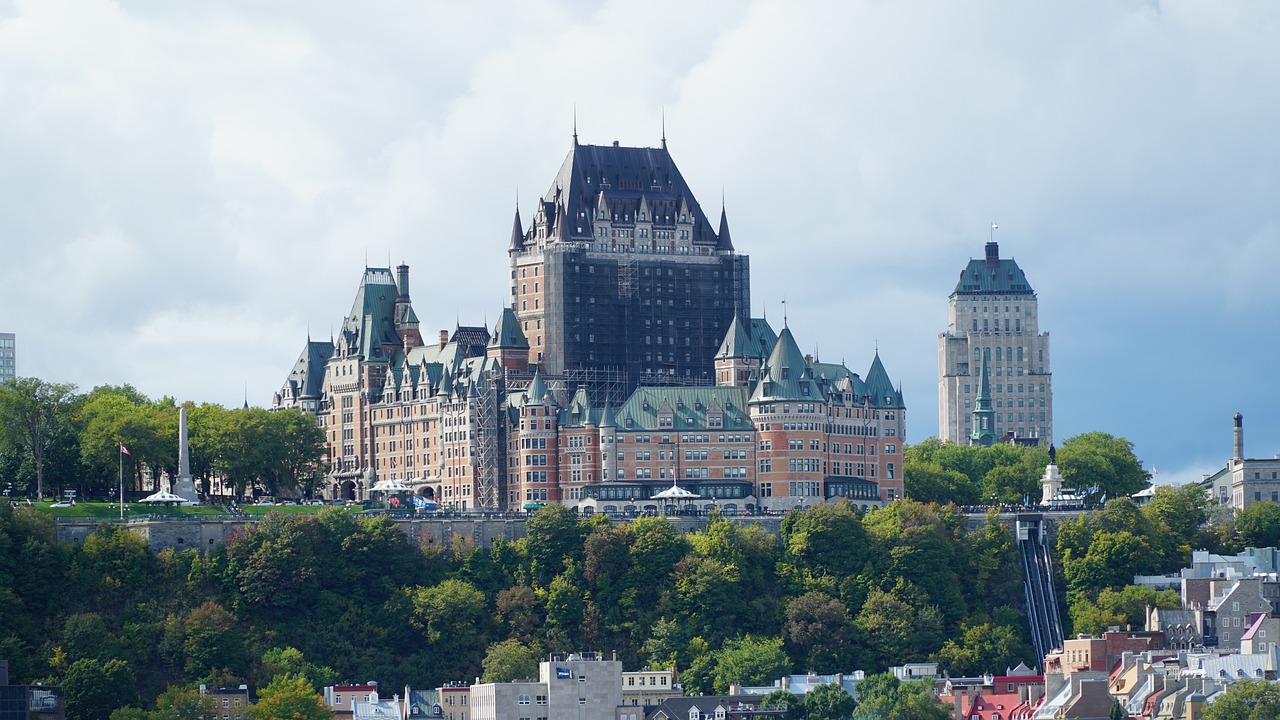
Materials Used in Medieval Quilting
During the medieval period, the choice of materials for quilting was crucial, as it directly influenced the quality, durability, and overall aesthetic of the quilts produced. The fabrics and fillings available reflected the resources and technology of the time, often showcasing the wealth and status of the owner. Commonly used materials included wool, linen, and cotton, each chosen for its unique properties and availability.
Wool was a popular choice due to its warmth and durability, making it ideal for bedding and outer garments. It was often sourced from local sheep, dyed in vibrant colors, and then spun into thread for quilting. The use of wool not only provided insulation but also added a luxurious feel to the quilts. On the other hand, linen, made from the flax plant, was prized for its breathability and smooth texture. It was typically used in warmer months, offering a lighter alternative for those who sought comfort without excessive heat.
As the trade routes expanded, cotton became more accessible, allowing for a broader range of quilt designs. This fabric was lighter and easier to work with, making it a favorite among quilters who experimented with intricate patterns. The introduction of cotton also led to the use of printed fabrics, which added a new dimension to medieval quilting. The ability to incorporate patterns into quilts not only enhanced their visual appeal but also allowed for greater expression of creativity.
In addition to the fabrics, the filling used in quilts was equally important. Common fillings included sheep's wool, which provided excellent insulation, and feathers from birds, which offered a soft, plush feel. The choice of filling often depended on the intended use of the quilt—whether it was for warmth during cold nights or a decorative piece to showcase in a home. The combination of these materials resulted in quilts that were not only functional but also served as a reflection of the owner's taste and social standing.
Furthermore, the quilting process itself was a testament to the skill and artistry of medieval women. They would often combine various materials, creating stunning patchwork designs that told stories or represented significant events. The quilts became more than mere bed coverings; they transformed into cherished heirlooms, passed down through generations. This intricate relationship between materials and the quilting process highlights the rich tapestry of medieval life, where utility and artistry coexisted harmoniously.
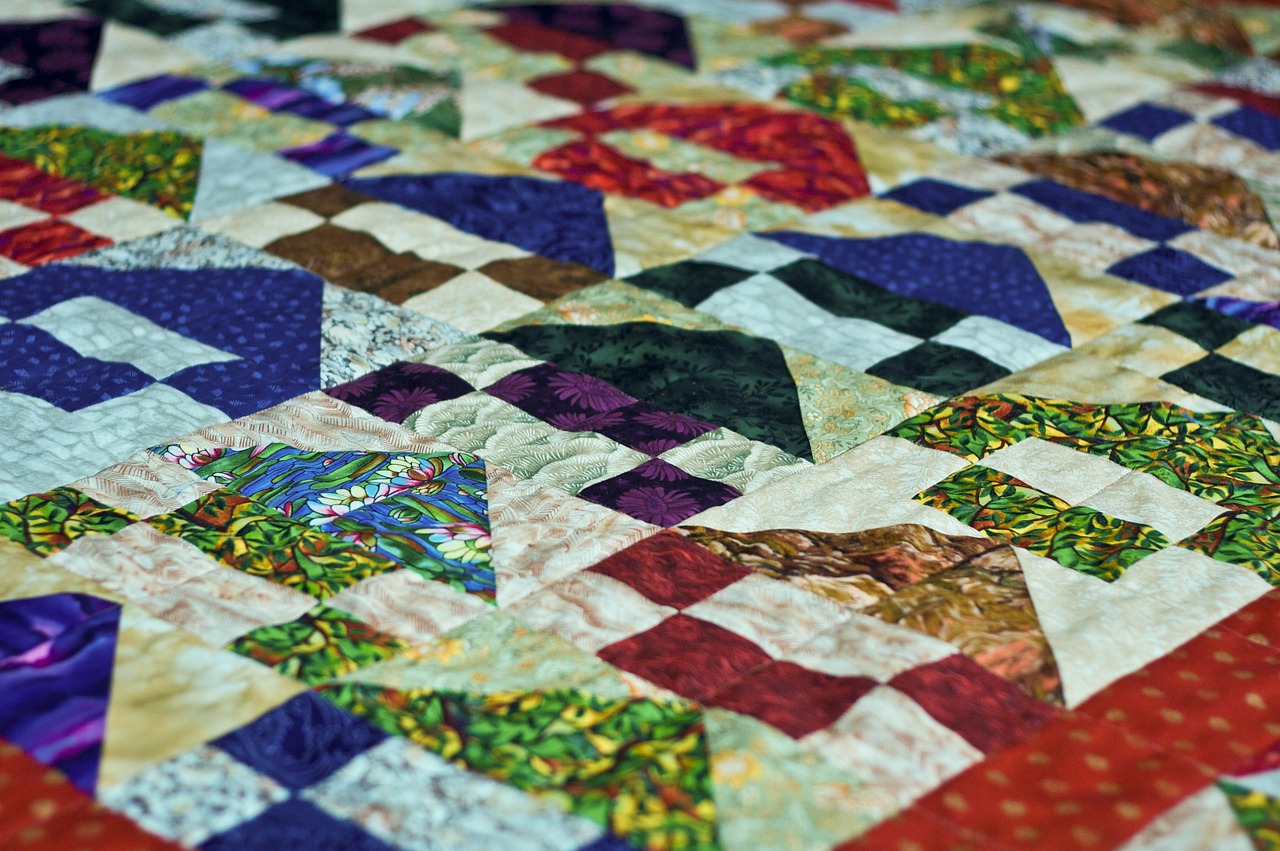
Quilting as a Social Activity
Quilting has always been more than just a practical craft; it has served as a social glue that binds communities together. Imagine a group of women gathering in a cozy living room, laughter and chatter filling the air as they stitch together colorful pieces of fabric. These gatherings, often referred to as quilting bees, were not only about creating beautiful quilts but also about fostering friendships and sharing stories. In many cultures, quilting bees became a vital part of community life, providing a space for women to express their creativity while also supporting one another through life's challenges.
The act of quilting together allowed for the exchange of techniques, patterns, and ideas. It was an opportunity to pass down traditions from one generation to the next, ensuring that the art of quilting would not only survive but thrive. As they worked side by side, quilters would discuss everything from family matters to local news, creating a rich tapestry of social interaction. This collaborative spirit is what makes quilting such a cherished activity, as it transforms a solitary task into a communal experience.
Moreover, quilting bees often had a purpose beyond mere socialization. Many quilts created during these gatherings were made for charitable causes, such as raising funds for local families in need or providing warmth for those less fortunate. This altruistic aspect of quilting not only strengthened community bonds but also instilled a sense of shared responsibility among participants. The quilts became symbols of love and support, stitched together with care and intention.
In modern times, the essence of quilting as a social activity continues to flourish, albeit in different forms. Online quilting groups and virtual bees have emerged, connecting enthusiasts from all over the world. These platforms allow quilters to share their creations, seek advice, and form friendships across geographical boundaries. The digital age has expanded the quilting community, making it more inclusive and diverse, while still preserving the heart of what quilting has always represented: connection and collaboration.
Ultimately, quilting is not just about the finished product; it is about the journey taken together. Whether gathered around a table or connecting through a screen, the act of quilting brings people together, creating a vibrant community that celebrates creativity, compassion, and camaraderie.
- What is a quilting bee? A quilting bee is a social gathering where people come together to quilt, share techniques, and enjoy each other’s company.
- How has quilting changed over the years? Quilting has evolved from a practical necessity to a celebrated art form, incorporating new techniques, styles, and materials.
- Can I participate in quilting online? Yes! Many online communities and forums allow quilters to connect, share their work, and participate in virtual quilting bees.

Quilting in the 18th and 19th Centuries
As we journey into the 18th and 19th centuries, we witness a remarkable transformation in the world of quilting. What once began as a practical necessity evolved into a celebrated art form, reflecting not only the creativity of the quilters but also the cultural and social dynamics of the time. During this period, quilting became increasingly popular among various social classes, and the patterns and techniques used in quilting began to flourish.
One of the most significant developments during this era was the emergence of distinctive quilting patterns. These patterns, often passed down through generations, were not merely decorative; they told stories and conveyed messages. From the intricate designs of the Log Cabin to the elegant Double Wedding Ring, each quilt was a unique expression of the maker's skill and imagination. Quilting bees, where women gathered to sew together, became common, allowing them to share ideas and techniques while fostering a sense of community.
In addition to their artistic value, quilts also held historical significance. They were often used as a means of communication, especially during tumultuous times. For instance, quilts played a role in the American Civil War, serving as a source of comfort for soldiers and their families. Many quilts were made to raise funds for the war effort, showcasing the resilience and creativity of those who crafted them.
During this time, the advent of the sewing machine in the mid-19th century revolutionized quilting. This technological advancement allowed for greater precision and efficiency, enabling quilters to create more complex designs in less time. The sewing machine opened up new possibilities for both amateur and professional quilters, leading to the birth of quilting as a recognized craft and hobby.
Moreover, the 18th and 19th centuries saw an increase in the availability of fabrics, thanks to the industrial revolution. This allowed quilters to experiment with a wider range of colors and textures, further enhancing the visual appeal of their creations. The introduction of printed fabrics also contributed to the diversity of quilting styles, making it accessible to a broader audience.
In summary, the 18th and 19th centuries marked a pivotal moment in the history of quilting. It transitioned from a practical necessity to an expressive art form, reflecting the social, cultural, and technological changes of the time. Quilts became more than mere bedding; they became a canvas for storytelling, a means of communication, and a source of comfort and community. As we admire the quilts from this era, we can appreciate the skill, creativity, and resilience of the quilters who brought these beautiful pieces to life.
- What materials were commonly used in 18th and 19th-century quilts?
Fabrics such as cotton, wool, and linen were commonly used, with cotton becoming increasingly popular due to its affordability and availability. - How did quilting patterns evolve during this period?
Quilting patterns became more intricate and varied, with many designs reflecting regional styles and personal stories. - What role did quilting bees play in society?
Quilting bees were social gatherings that fostered community, allowing women to collaborate, share ideas, and strengthen bonds. - Did quilting have any political significance in the 18th and 19th centuries?
Yes, quilts were often used as tools for communication and fundraising during significant historical events, such as the Civil War.
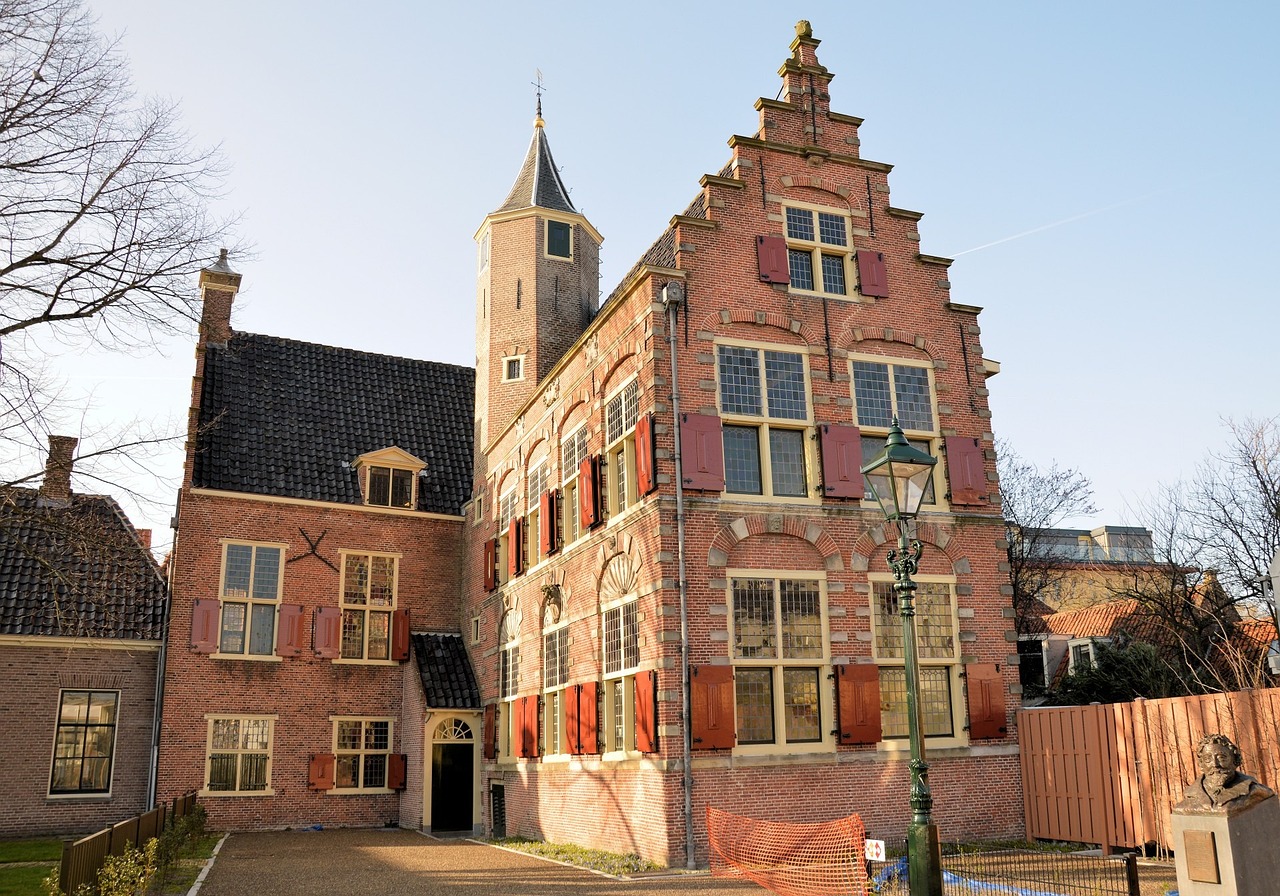
The Role of Quilts in American History
Quilts have woven themselves into the very fabric of American history, serving not just as cozy bedcovers but as powerful symbols of culture, resilience, and communication. From the early days of settlement to the tumultuous times of the Civil War, quilts have told stories that resonate with the struggles and triumphs of the American people. Imagine a quilt not merely as a decorative item, but as a canvas that captures the essence of its time—each stitch a testament to the hands that crafted it, each pattern a whisper of history.
During significant historical events, quilts took on roles that extended far beyond their physical presence. For instance, they were often used as a means of communication, particularly among communities of enslaved individuals. These quilts weren’t just pretty patterns; they were coded messages that provided essential information about escape routes and safe havens. The symbolism embedded in these quilts served as a lifeline for those seeking freedom. The intricate designs and colors held meanings that could guide individuals on their perilous journeys. For example:
| Quilt Pattern | Meaning |
|---|---|
| Bear's Paw | A signal to follow the bear trails that led to safety. |
| Crossroads | A reminder to choose the right path to freedom. |
| Log Cabin | A symbol of home and security, often indicating a safe house. |
Moreover, quilts played a pivotal role in the women's suffrage movement and other social movements throughout American history. They were often created as fundraising items, sold to support causes such as women's rights and abolition. The act of quilting itself became a form of activism, where women gathered to create not just beautiful art, but a collective voice for change. These gatherings, often referred to as quilting bees, were spaces where women could share ideas, strategize, and foster community bonds.
In addition to their practical uses, quilts have served as historical records, preserving the stories of families and communities. Many quilts are passed down through generations, each stitch carrying memories of the past. They reflect the cultural heritage of different regions, showcasing unique styles and techniques that tell the story of the people who made them. For instance, the Appalachian quilts are known for their vibrant colors and intricate patterns, while African American quilts often incorporate symbols and motifs that reflect their rich history.
As we delve deeper into the role of quilts in American history, it becomes clear that they are more than just fabric stitched together. They are a powerful medium of expression, a way to document the struggles and achievements of those who came before us. Each quilt is a narrative, a piece of art that invites us to explore the stories of resilience and hope that define the American spirit.
- What is the significance of quilts in American history? Quilts serve as historical documents, cultural artifacts, and tools for communication, particularly in social movements.
- How did quilts help in the Underground Railroad? Quilts contained coded messages that guided escaping slaves to safety.
- What are some common quilt patterns and their meanings? Patterns like Bear's Paw and Log Cabin held specific meanings related to safety and home.
- Are quilts still relevant today? Yes, modern quilting movements continue to celebrate and evolve the art of quilting while addressing contemporary social issues.

Quilts and the Underground Railroad
The connection between quilts and the Underground Railroad is as fascinating as it is profound. During the harrowing times of slavery in the United States, quilts became more than just beautiful pieces of fabric; they transformed into powerful symbols of hope and guidance. Imagine a world where a simple quilt could help save lives, where each stitch held a secret, and every pattern could lead someone to freedom. This is the world that many enslaved people navigated, and quilts played a crucial role in that journey.
Many historians believe that certain quilt patterns served as coded messages for those seeking to escape. For example, the “Monkey Wrench” pattern was said to symbolize a call to action, encouraging fugitives to get ready for their escape. Similarly, the “Log Cabin” design was interpreted as a signpost indicating that it was safe to travel. The use of these patterns was not just a creative outlet but a means of communication in a time when words could lead to dire consequences.
To further illustrate how quilts served this purpose, let’s take a look at some common quilt patterns and their meanings:
| Quilt Pattern | Meaning |
|---|---|
| Monkey Wrench | Prepare for escape |
| Log Cabin | Safe to travel |
| Flying Geese | Direction to freedom |
| Drunkard's Path | Take a circuitous route |
This clever use of quilting as a method of covert communication highlights the ingenuity and resilience of those involved in the Underground Railroad. Quilters, often women who gathered in groups, would create these intricate designs while discussing their plans and sharing stories, all while maintaining a façade of normalcy. These quilting bees were not just social gatherings; they were strategic meetings where vital information was exchanged under the guise of creativity.
Moreover, the quilts themselves provided warmth and comfort during the perilous journeys that many fugitives undertook. They were not merely decorative; they were practical items that could be used for shelter or warmth. In a way, these quilts became a lifeline, embodying the spirit of community and solidarity among those fighting for freedom. The act of quilting became a shared endeavor, where the stitches sewn together represented a collective hope for liberation.
In conclusion, the relationship between quilts and the Underground Railroad is a testament to the resourcefulness of those who sought freedom. These textiles were woven with purpose, carrying hidden messages and providing comfort to those who dared to dream of a life beyond bondage. The legacy of these quilts continues to inspire, reminding us of the power of creativity in the face of adversity.
- What was the purpose of quilts during the Underground Railroad?
Quilts served as coded messages to guide escaping slaves, indicating safe routes and necessary actions. - What are some common quilt patterns associated with the Underground Railroad?
Patterns like "Monkey Wrench," "Log Cabin," and "Flying Geese" had specific meanings related to escape routes. - How did quilting bees contribute to the Underground Railroad?
Quilting bees were social gatherings where women shared information and strategies for aiding fugitives while creating quilts. - Can quilts be considered art?
Yes, quilts are not only practical items but also artistic expressions that reflect cultural history and personal creativity.

Modern Quilting Movements
In recent years, quilting has experienced a remarkable renaissance, transforming from a traditional craft into a vibrant and dynamic art form. This modern quilting movement is characterized by innovative techniques, bold designs, and a strong sense of community among quilters. With the rise of social media platforms, quilters can now share their creations, exchange ideas, and inspire one another like never before. Have you ever wondered how a simple piece of fabric can tell a story? Modern quilting has redefined storytelling through textiles, offering a canvas for personal expression and creativity.
One of the most exciting aspects of modern quilting is the incorporation of contemporary aesthetics. Traditional quilts often featured intricate patterns and muted colors, but today’s quilters are embracing a more eclectic approach. Bright colors, geometric shapes, and asymmetrical designs dominate the scene, making quilts not just functional items but also striking pieces of art that can adorn walls or serve as statement pieces in a living room. It's like taking a walk through an art gallery, where each quilt has its own unique narrative and style.
Additionally, modern quilting has given rise to various sub-movements that cater to different tastes and philosophies. For instance, improv quilting encourages quilters to break free from the constraints of patterns and templates, allowing for spontaneous creativity. This technique is akin to jazz music, where improvisation leads to unexpected and delightful outcomes. Quilters who embrace this style often find joy in the process of creation itself, rather than focusing solely on the final product.
Moreover, the concept of sustainable quilting has gained traction, as more quilters are becoming aware of the environmental impact of their craft. Many are turning to upcycled materials, thrifted fabrics, and eco-friendly batting options. This not only reduces waste but also adds a unique character to each quilt, as the materials carry their own history and stories. It’s a beautiful way to honor the past while creating something entirely new.
Community plays a pivotal role in modern quilting movements. Quilting bees, once a staple in many households, have evolved into vibrant quilting groups that meet both in-person and online. These gatherings provide a space for quilters to share techniques, showcase their works, and support one another. Whether it's through local workshops or global online challenges, the sense of camaraderie is palpable. It’s a reminder that quilting is not just about fabric; it’s about connection, collaboration, and shared passion.
As we look to the future, it’s clear that modern quilting will continue to evolve. With the advent of technology, tools such as quilting software and digital cutting machines are making it easier for quilters to experiment and innovate. The possibilities are endless, and the quilting community is more inclusive than ever, welcoming newcomers and seasoned artisans alike. So, if you’ve ever thought about picking up a needle and thread, now is the perfect time to dive into the colorful world of modern quilting!
- What is modern quilting? Modern quilting is a contemporary approach to quilting that emphasizes innovative designs, bold colors, and personal expression.
- How can I get started with quilting? Begin by gathering basic supplies such as fabric, a rotary cutter, and a sewing machine. Consider joining a local quilting group or taking an online class to learn techniques.
- What are some popular modern quilting techniques? Techniques such as improv quilting, foundation paper piecing, and using digital tools are popular among modern quilters.
- Can I use recycled materials for quilting? Absolutely! Many modern quilters embrace sustainable practices by using upcycled fabrics, which adds character and history to their quilts.
Frequently Asked Questions
- What is the origin of quilting?
Quilting dates back to ancient civilizations, where it began as a practical necessity. Initially, it was used for warmth and protection, with early examples found in various cultures around the globe. The art evolved over time, reflecting the needs and resources of different societies.
- How did quilting evolve during the Middle Ages?
During the Middle Ages, quilting became more widespread in Europe. It was used not only for bedding but also in armor, showcasing its versatility. Quilting was often associated with social status, as the quality and intricacy of quilts could indicate wealth and refinement.
- What techniques were used in medieval quilting?
The techniques of medieval quilting were diverse, involving various layering and stitching styles. These methods defined the art form and showcased the creativity and resourcefulness of quilters during that period. Quilting was not just a craft; it was a reflection of cultural identity.
- What materials were commonly used in medieval quilting?
The choice of materials significantly influenced the quality and durability of quilts. Fabrics like wool, linen, and cotton were commonly used, often depending on the resources available at the time. The fillings varied as well, ranging from natural fibers to more innovative materials as they became accessible.
- How did quilting serve as a social activity?
Quilting was often a communal effort, bringing people together in a creative space. Quilting bees fostered community bonds, allowing women to collaborate and share stories while creating beautiful works of art. This social aspect made quilting a cherished tradition in many cultures.
- What role did quilts play in American history?
Quilts have played a vital role in American culture, especially during significant historical events. They served as tools for communication, comfort, and even as symbols in social movements, reflecting the struggles and triumphs of the American people throughout history.
- How were quilts used in the context of the Underground Railroad?
Some quilts served as coded messages for escaping slaves on the Underground Railroad. The patterns and colors often held hidden meanings, guiding individuals toward safety. This intriguing connection highlights the resourcefulness and bravery of those involved in the movement.
- What are modern quilting movements?
Today, quilting continues to evolve with new techniques and styles, embracing modern aesthetics. Contemporary quilting movements focus on innovation and creativity, making quilting a popular hobby and art form once again. This resurgence highlights the timeless appeal of quilting as a means of self-expression.



















